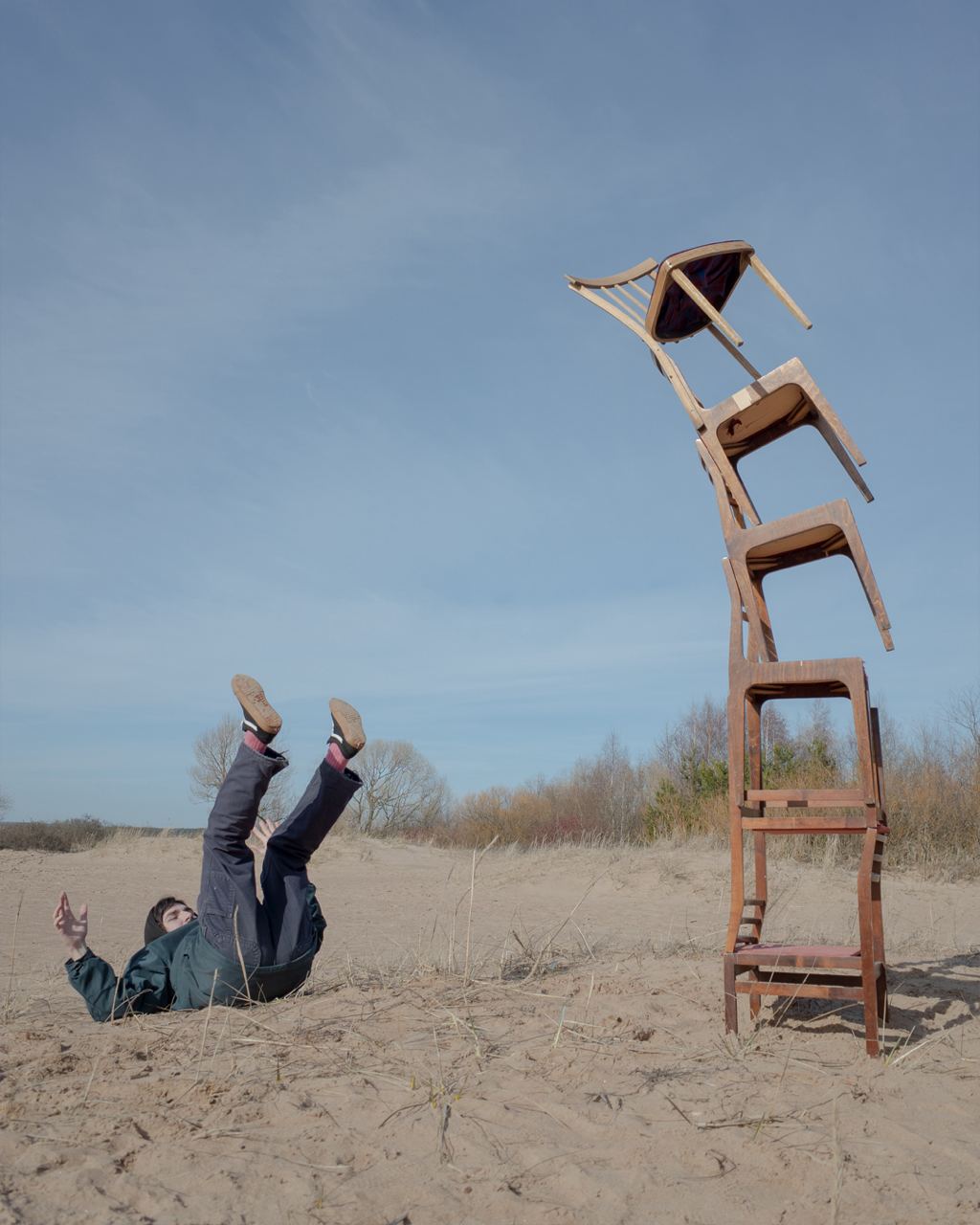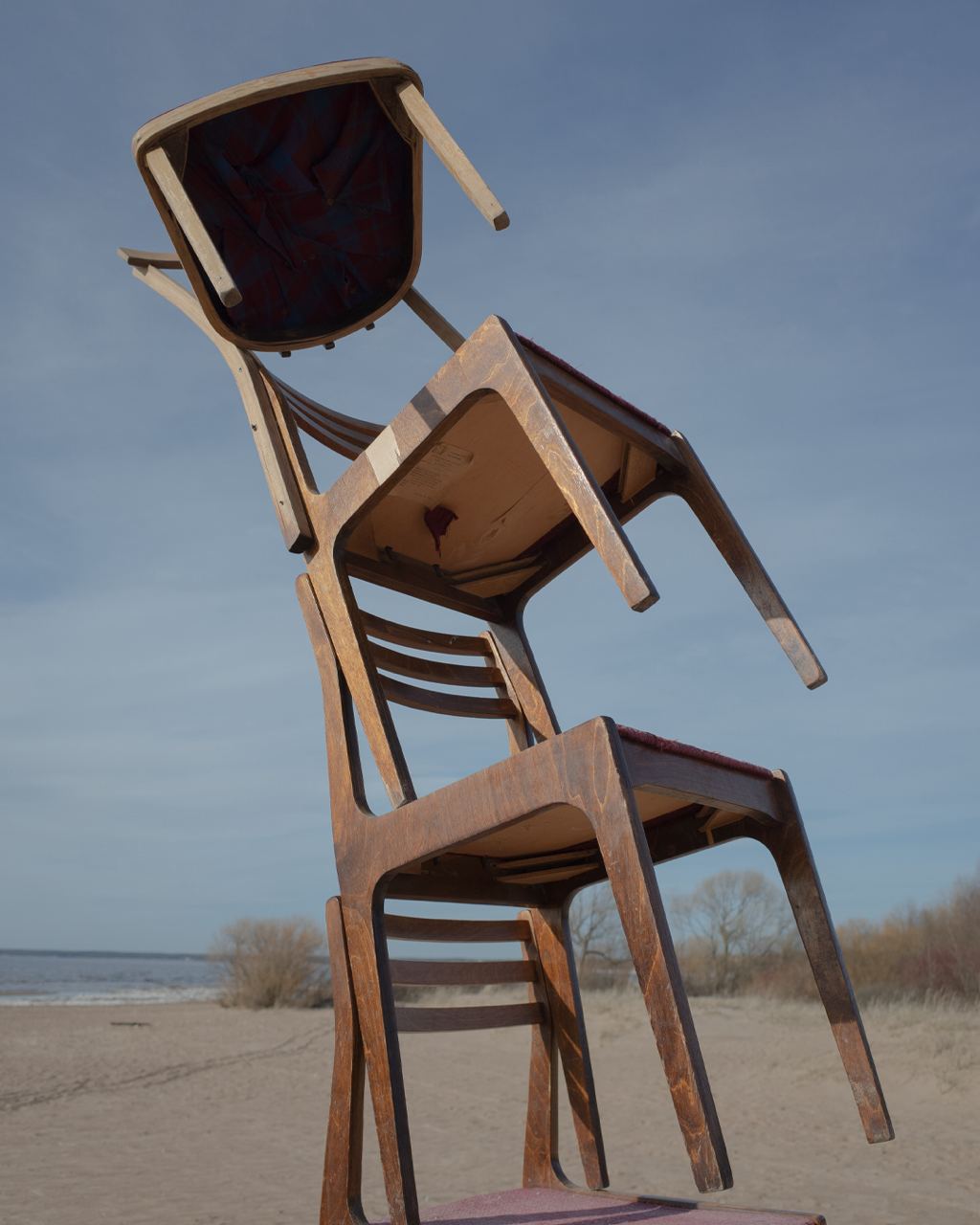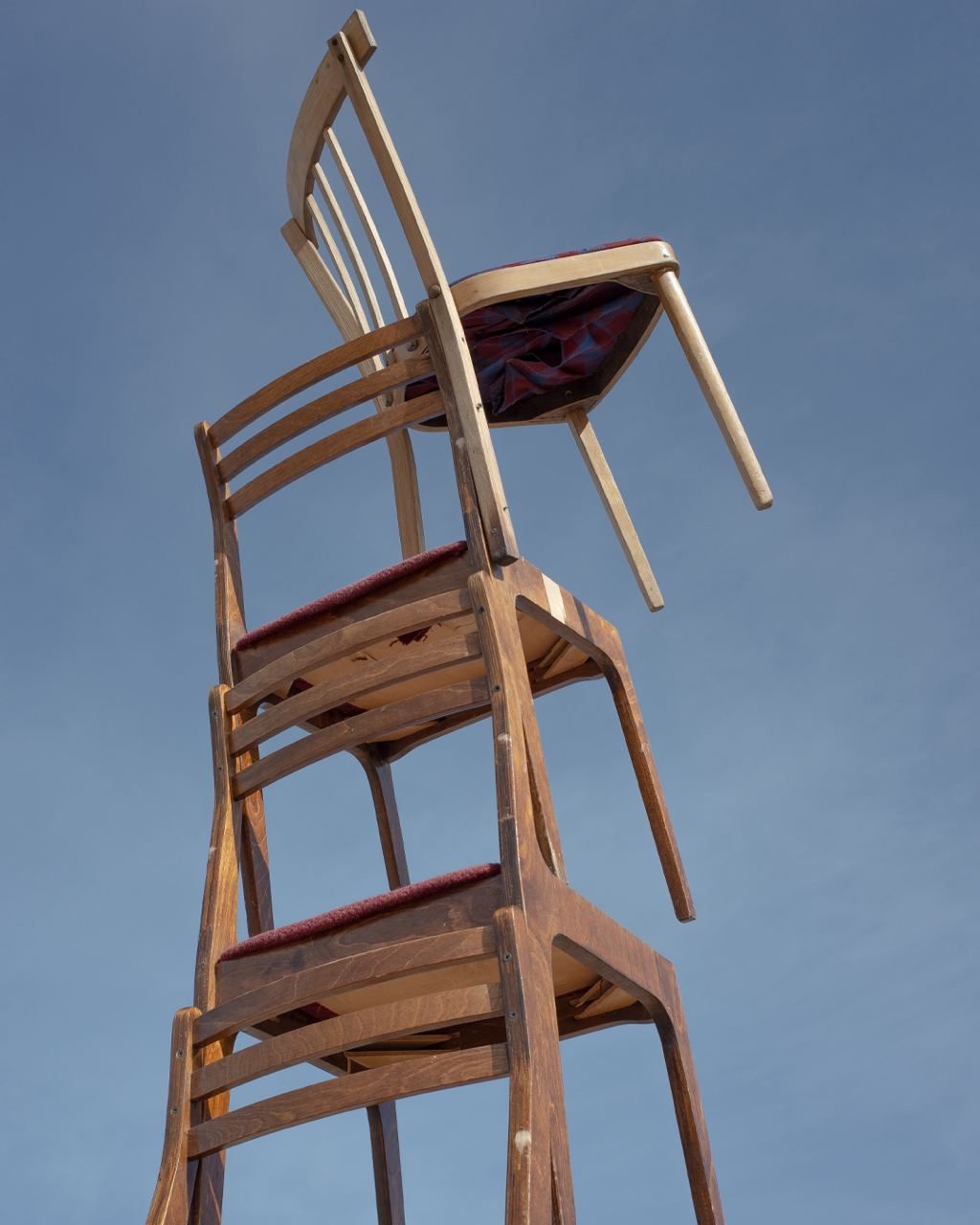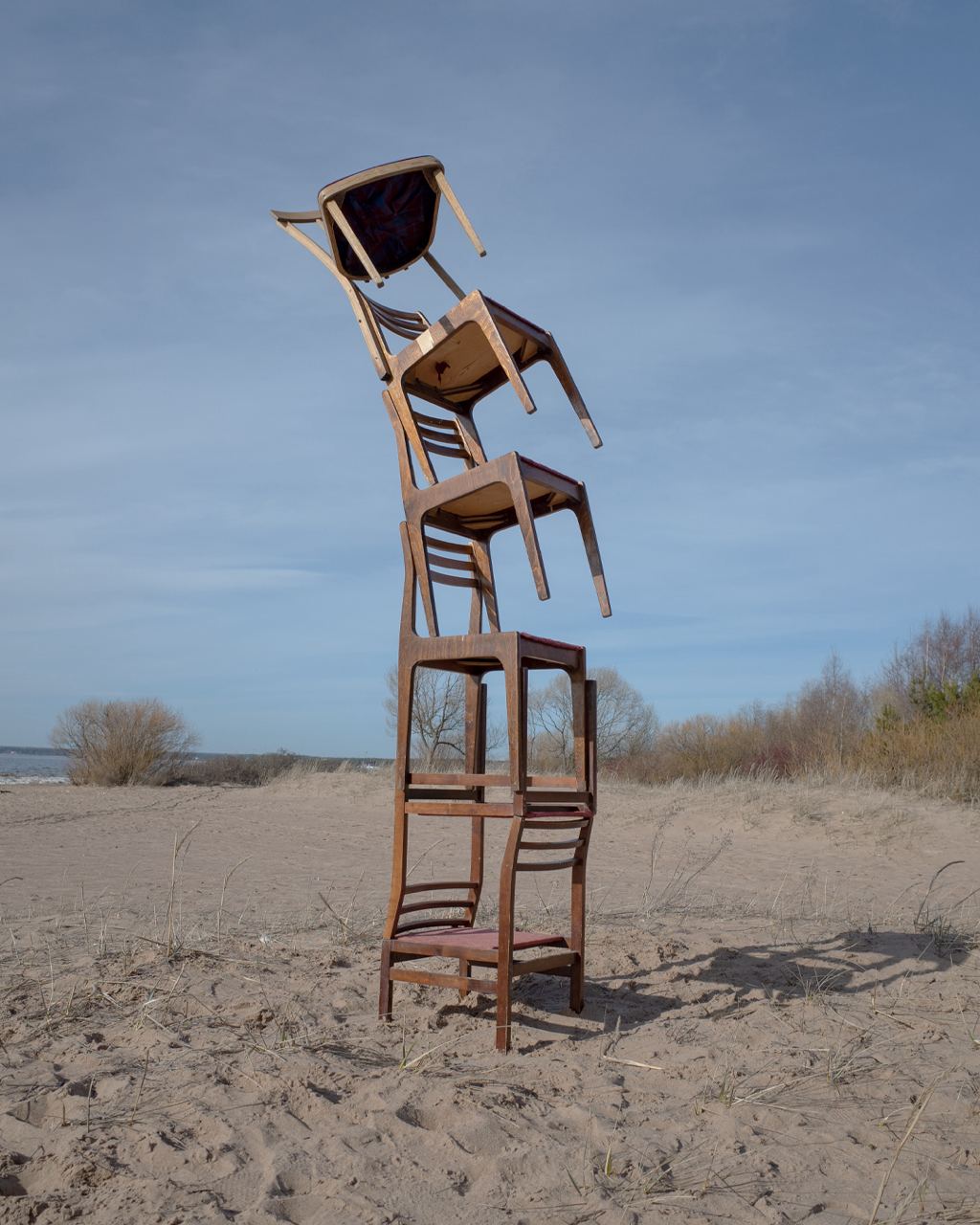Ru / En
Sreda
Featuring specially commissioned artworks, a podcast series, and a selection of timely essays, Sreda online magazine offers a nuanced view on culture and contemporaneity. Content is available for a limited period of time and updated every other Wednesday. The Russian word ‘sreda’ means both Wednesday and the natural, geographical, and social environment.




Dmitry Makhno
Tower of Chairs, 2025
Installation
V–A–C Sreda online magazine continues its three-month programme dedicated to air in art and culture. In this issue, we present a work by artist Dmitry Makhno.
The Tower of Chairs installation recalls the childhood game of building a hideout from pillows and blankets. In an attempt to reach the ceiling, Makhno stacked stools into a towering structure and began to climb. Though the tower collapsed, the feeling of flight remained, and became the foundation for this project. Tower of Chairs becomes a metaphor for the overcoming of boundaries and striving to attempt the impossible.
Subscribe to our newsletter:
By leaving your email, you consent to the processing of your personal data and agree to the privacy policy
Contact us
sreda@v-a-c.org
sreda@v-a-c.org
The views and opinions expressed here are those of the authors, and may not coincide with the position of V–A–C Foundation. 12+, except specially marked content for other age groups.
All rights reserved. Reproducing or using the materials from this web-page without written consent of the rightsholder is forbidden.
All rights reserved. Reproducing or using the materials from this web-page without written consent of the rightsholder is forbidden.